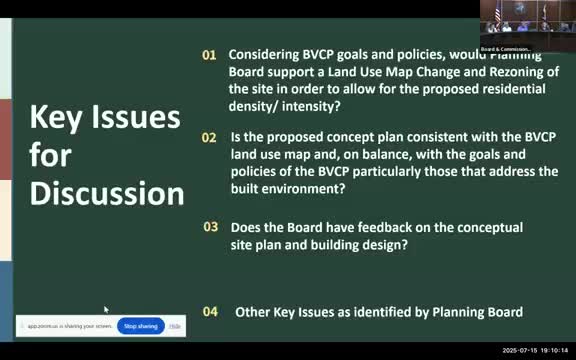Boulder Council Discusses Historic Preservation and Zoning Changes for Naropa Property
July 19, 2025 | Boulder, Boulder County, Colorado
Thanks to Scribe from Workplace AI , all articles about Colorado are free for you to enjoy throughout 2025!

This article was created by AI using a video recording of the meeting. It summarizes the key points discussed, but for full details and context, please refer to the video of the full meeting. Link to Full Meeting
A key topic was the potential historic designation of two buildings on the Naropa property: the Arapahoe House and the Chestnut House, also known as the Tea House. Both structures are eligible for historic preservation, which would require a demolition permit for any alterations. The board discussed the implications of relocating these buildings, with historic preservation staff expressing a preference against relocation, although the final decision would depend on further evaluations during the permitting process.
The conversation also delved into zoning regulations, particularly how they affect land use for educational institutions like Naropa. Board members clarified that if Naropa were to retain ownership of the property, it could develop housing aligned with its educational mission. However, if the property were to be sold to a private developer, the zoning restrictions would limit residential development to six units per acre, significantly constraining potential housing projects.
Another critical point raised was the need for clarity regarding the land use map and its impact on growth projections outlined in the Boulder Valley Comprehensive Plan. Board members expressed concerns about the vagueness of criteria related to land use changes and the necessity for detailed information to guide future decisions.
The meeting also touched on the Lincoln School Building, a landmark structure central to the proposed development. While the preservation of the building itself is assured, there are currently no specific criteria governing how the surrounding site can be developed in relation to the landmark.
In conclusion, the discussions at the Boulder City Planning Board meeting underscored the delicate balance between preserving historical sites and accommodating the growing housing demands in the community. As the board moves forward, further evaluations and clarifications will be essential to navigate the complexities of zoning and historic preservation in Boulder. The next steps will involve continued dialogue among stakeholders to ensure that both community needs and historical integrity are respected in future developments.
Converted from 7-15-25 Planning Board Meeting meeting on July 19, 2025
Link to Full Meeting
Comments
View full meeting
This article is based on a recent meeting—watch the full video and explore the complete transcript for deeper insights into the discussion.
View full meeting
